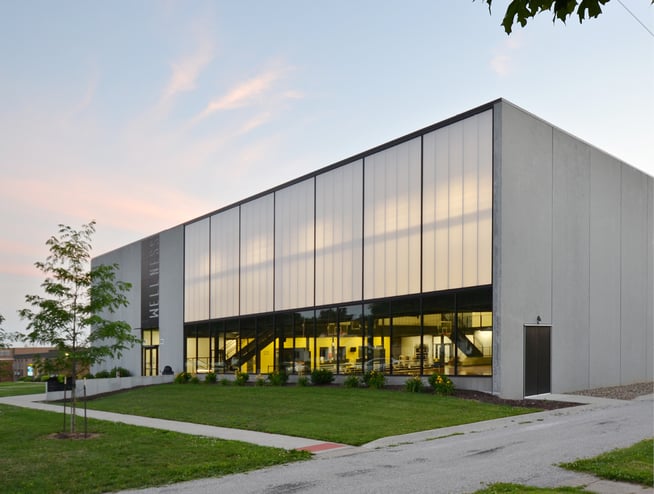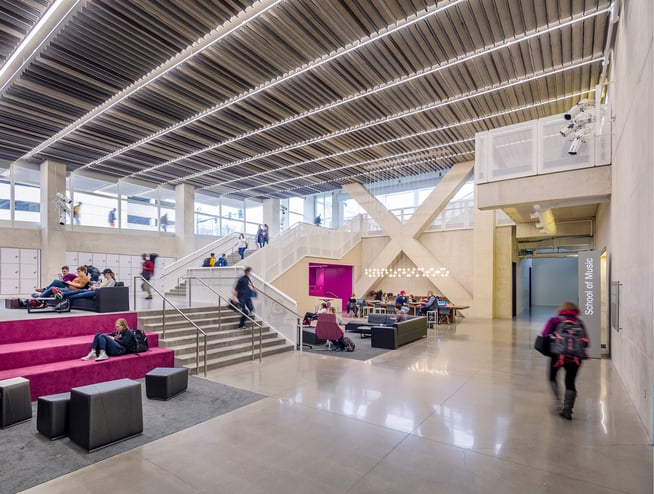The Value of Pragmatic Design

Every architecture firm has a different approach to design. Our approach is pragmatic. We draw from our Midwestern roots and take inspiration from the barns dotting the Iowa landscape.
For us, barns are the epitome of architectural pragmatism. They take no more than they need, every element serving a practical purpose. The board skin sheds rain and facilitates air filtration, and the apertures allow for grain storage and livestock management.
But our praise of the barn’s rugged simplicity is more than an aesthetic preference. In our experience, a pragmatic approach to design maximizes the value we can bring to our clients and their communities.
It’s easy to get a little heady when talking about design, but that wouldn’t be very pragmatic of us. So, in this article, we’ll provide a straightforward, no-nonsense explanation of pragmatic design, helping you understand how this philosophy brings value to your project.
What is Pragmatic Design?
Pragmatism means solving problems sensibly and realistically. We look to find the most straightforward, practical solutions and continuously edit until we are down to the essentials—the elements that provide function.
Simplifying plans and removing unnecessary elements reduces size and maximizes the potential of each space. We focus on creating flexible, adaptable spaces that serve multiple purposes.
Pragmatism also means doing more with less. We try to stick to a limited palette of durable, timeless materials—like wood, stone, concrete, and glass—that don’t require finishes. An extra finish is simply an added cost.
This approach reduces waste while simplifying the construction process—helping you get the greatest value for your dollar.
What Value Does Pragmatic Design Bring to Your Project?
A pragmatic approach to design maximizes your project’s potential. Extra materials and superfluous details add cost, but by limiting your palette, you can make the most out of your budget.
Often, the most simplistic route is the most cost-effective. For Lone Tree Wellness Center, the design team utilized standard modules to reduce the cost of the structure’s primary material, precast concrete panels. After talking to suppliers about the optimal panel size, they planned the building around a 10-foot module.
10-foot panels were the largest size that could fit on a two-panel trailer, allowing two panels to be shipped at once. This decision cut transportation costs in half. The panels could also be installed more quickly than other material options, reducing construction complications.
In the end, these decisions helped deliver the project 11% below budget.

10-foot precast panels at Lone Tree Wellness Center.
With a pragmatic approach, every element serves a practical purpose. For example, the felt ceiling finishes in Voxman School of Music enhance acoustic performance. Functional elements can also beautify a space, so you don’t need to spend your budget on extra finishes.
But the value of pragmatic design extends beyond cost. Doing more with less is the most sustainable approach.
By planning around standard material sizes, the construction team does not need to cut materials on site, reducing waste. A limited material palette also makes it easier to source from local suppliers, reducing the carbon emissions associated with shipping.
In short, a pragmatic approach maximizes your budget’s potential while minimizing your environmental impact.

Felt acoustical panels at Voxman School of Music.
Learn More About the Design Process
A design approach goes beyond aesthetics. It defines your design team’s goals and guides the decision-making process.
Taking inspiration from our Midwestern roots, we seek to deliver functional, straightforward solutions and edit down to the essentials. This approach represents our commitment to our clients and the planet. It helps you maximize your budget’s potential while reducing waste and carbon emissions.
Our pragmatic approach also helps us assist you with your decision-making, especially when it comes to materials. Learn more by reading about the material selection process.